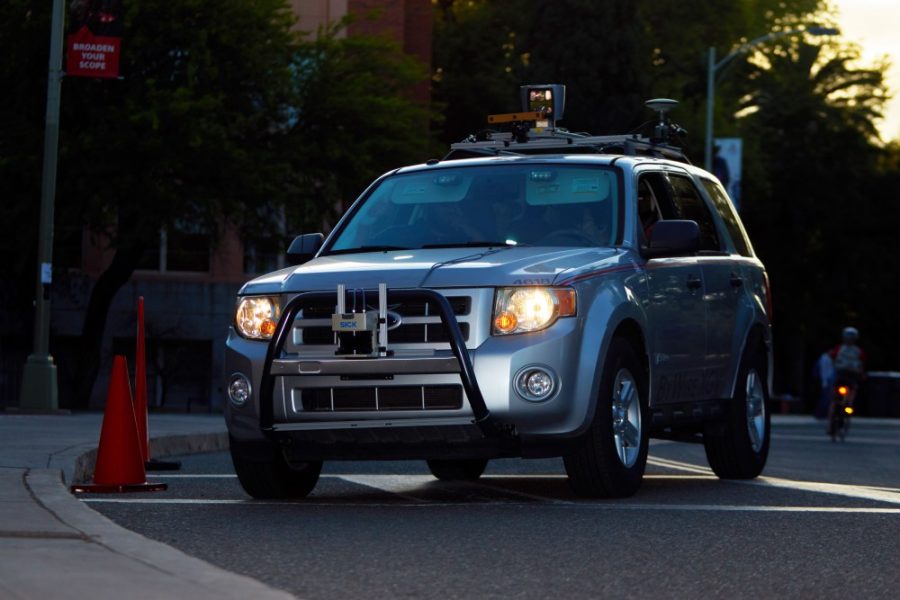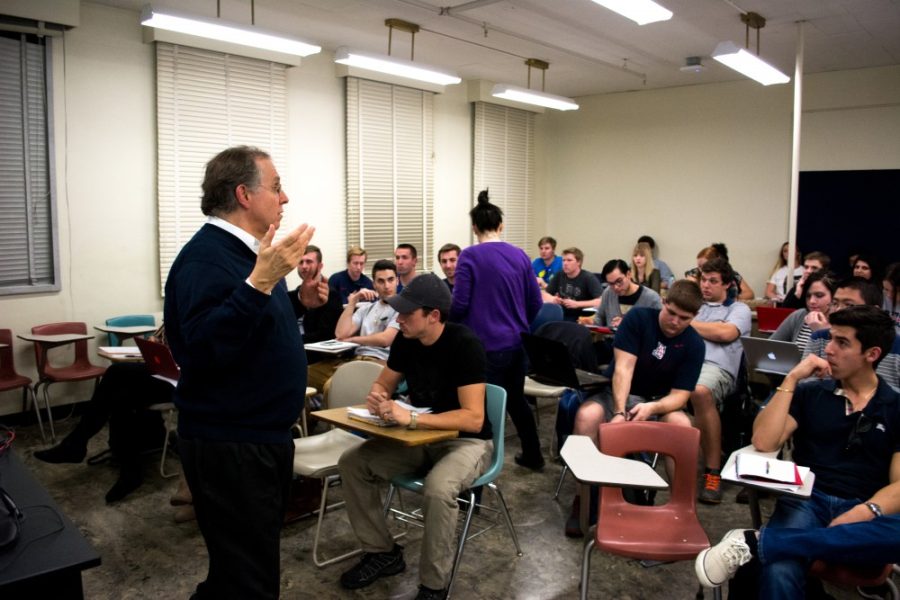The Cognitive Autonomous Test Vehicle or CAT Vehicle competition rolled to a stop with the final tests and simulations on Tuesday afternoon in front of Old Main.
This competition, hosted by the UA, invited national and international students from Georgia, Missouri, Switzerland and Chile to test their computer programs alongside students from the UA.
Judging concluded at 5 p.m., announcing the international robotics masters students Toni Rosiñol, Jen Wei Nian and Lanke Fu from ETH Zürich, a STEM university in Switzerland, as the Best Overall winners for having the most “uncanny representation” of the real world in their simulation. They also won Best Classification for the most differentiation in the objects in their simulation.
“I feel like over the last couple of days everyone’s been pretty engaging, so we got a lot of help from Matt [Bunting],” Fu said. “We are a foreign team, but we also got a lot of local help from the teachers here. So we’re like, part [of the] UA as well.”
The team cited Rosiñol’s push to have clean code instead of the usual quick-but-sloppy hackathon style, which is good for fast results but not for high quality, as what set them apart from other teams.
RELATED: Students progam self-driving cars during three-day competition

“In the long term, the problem is you cannot maintain [fast results], and long-term you’ll get not-as-good results as if you were keeping it tidy from the very beginning,” Rosiñol said. “That is the approach we followed, and I think it really helped us to get good results in the end instead of fast results.”
Other winners included students from Missouri University of Science and Technology for Best Overall Honorable Mention and Best Model-Based Design, and a UA team for Best Model-Based Design, Honorable Mention.
Connell D’Souza, a representative from MathWorks, came to support putting the best technology in the hands of students so they could learn this future technology.
“Most of the programmers who know how to program self-driving cars are only at Uber and Google,” D’Souza said. “If you think about it, you want these guys to be at the auto companies, not at the software companies. Our tools have always been toward auto companies and aero companies without programming backgrounds.”
MathWorks, a mathematical computing software company, hosted the competition. Students use MathWorks programs MATLAB and Simulink, which is designed to help non-programmers code better and quicker.
RELATED: Self-driving cars coming soon to Arizona
“There are definitely a lot of jobs out there, and there is a massive vacuum in the auto industries for engineers who know about these algorithms,” he continued. “That’s why it’s important. We need more people in the industry; it’s as simple as that.”
Over the course of one to six months, the nearly 20 teams worked to create a computer program using MATLAB and other software to test on the car.
“I like to think of it as making a reverse video game,” said William Silloway, an engineering student from Kennesaw University. “In a video game, you take a 3-D space and you try to make it real to the user. In this [competition] you’re taking a real thing and trying to turn it into 3-D space.”
Mentor and graduate student Matt Bunting was astounded to see the results some of the groups made, saying it was better than he could’ve imagined.
He predicted that the class he helps teach connected to this competition will continue to be about self-driving cars for at least a couple more years.
“We did teach how to program apps because that was the hot, new thing when the class started in 2008,” Bunting said. “But now the hot topic is autonomous vehicles, so right now we’ll stay on that until the next new thing comes up.”
Dr. Jonathan Sprinkle, professor for the class, made this competition possible after 18 months of planning and work. He hopes the students participating in the competition leave with a sense of accomplishment.
“With something so technologically advanced and with so many different options, they were able to reduce a lot of that complexity into something they could solve,” he said. “That’s really a lesson for life, that as hard as problems that we as a society face can be, you have to think about things that you can do and how you can do them, and each of us should think about the impact that we can have on someone else.”









